Role of Lactic Acid Bacteria & Benefits
Role of Lactic Acid Bacteria – Lactic acid bacteria (LAB)
Free when you spend over £49
99% of Products Manufactured In the UK
Email: enquiries@eco-filtration.co.uk
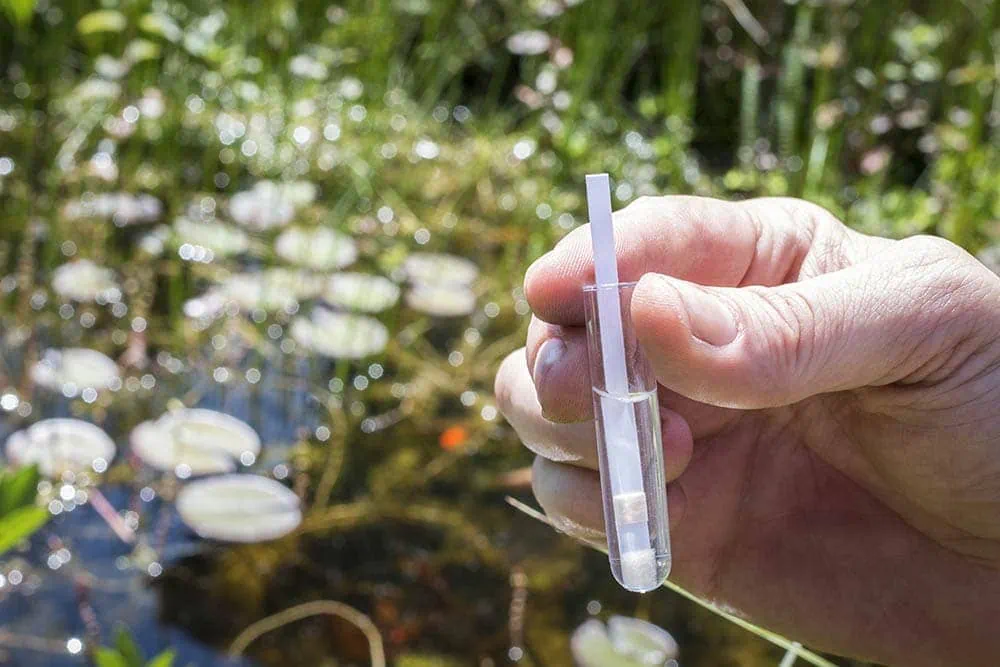
Pond care can be time consuming and difficult, especially when it comes to learning what the best water parameters for your pond should be and how to keep track of them. When it comes to ponds, pH is one of the big parameters you need to be routinely checking. Different plants and animals have different pH requirements, which makes understanding pH, how to check it, and how to adjust it important to their health and wellness.
This is based on a scale you likely learned about in middle or high school science classes. If water is acidic, the pH is low. If water is alkaline or basic, the pH is high. If water is neutral, the pH is right in the middle.
To get more technical, pH measures the number of free hydrogen and hydroxyl ions in the water. The pH scale ranges from 0–14, with 0 being the most acidic and 14 being the most alkaline. A neutral pH sits right at a 7.0. These levels directly correlate to the solubility and bioavailability of chemicals, like nutrients and heavy metals, in the water. It also ties in with water KH and GH, which gets into some really complicated chemistry. At baseline, though, you should understand the basic pH scale and what the numbers mean.
Keep in mind that we tend to think of things in a Hollywood kind of way. Many people carry the idea that acids will burn right through your skin, while alkaline objects are gentler and safer. While there are acids that will burn right through your skin, there are a whole lot of acids that won’t. In fact, some fish require water with a pH around 5.0–6.0, which is acidic, but not so acidic that you will hurt yourself if you put your hand in the tank.
When you think about chemicals like ammonia and lyme, you likely associate those with burning and skin damage, but both of these are alkaline. Ammonia has a pH of 11.0 and lyme has a pH of 12.4. In fact, lye, which we hear about in movies being used to break down bodies, has a pH of 13.0. Looking at it this way may help you better understand that alkaline isn’t inherently safe, while acidic isn’t inherently dangerous.
That really depends on what you have living in your pond. However, the most common pond fish are goldfish and Koi fish, which require a relatively neutral pH. They can live at pH levels from about 6.5–8.5, but they are happiest and healthiest with a pH around 7.5. If you’re keeping turtles in your pond, then you can safely keep your pH between about 6.0–8.0.
Keep in mind that you want your pH level to stay stable. Small changes are usually not a big deal, but if your pH rapidly swings up or down, then you may end up with a pond of dead animals. This is where KH and GH come into play, because the softer the water, or the lower the GH and KH, the less buffering power the water has and the more likely it is to experience rapid pH changes. The higher the GH and KH, the more buffering capacity the water has, leading to more stability in the pH.
When it comes to checking pH levels, you have two options. The best option is to use liquid test kits, which tend to give reliable results. The API Pond Master Test Kit is a good choice because it includes a wide range pH test, as well as tests for ammonia, phosphate, and nitrite. You can also purchase pH tests separately from a kit.
The other testing option is test strips, which tend to give less reliable results with some readings, but pH levels are typically pretty reliable. The API 5-in-1 Pond Test Strips are a good pick because they also allow you to see the GH and KH levels of the water, which will help you know the stability of your pH.
Perform a pH test to determine your water’s pH. If you are going to attempt to alter the pH, then you should check the pH right before you begin attempting to make changes. If you checked the pH last week and it was low, then you need to recheck it now to ensure the pH is still at a level that requires adjustments.
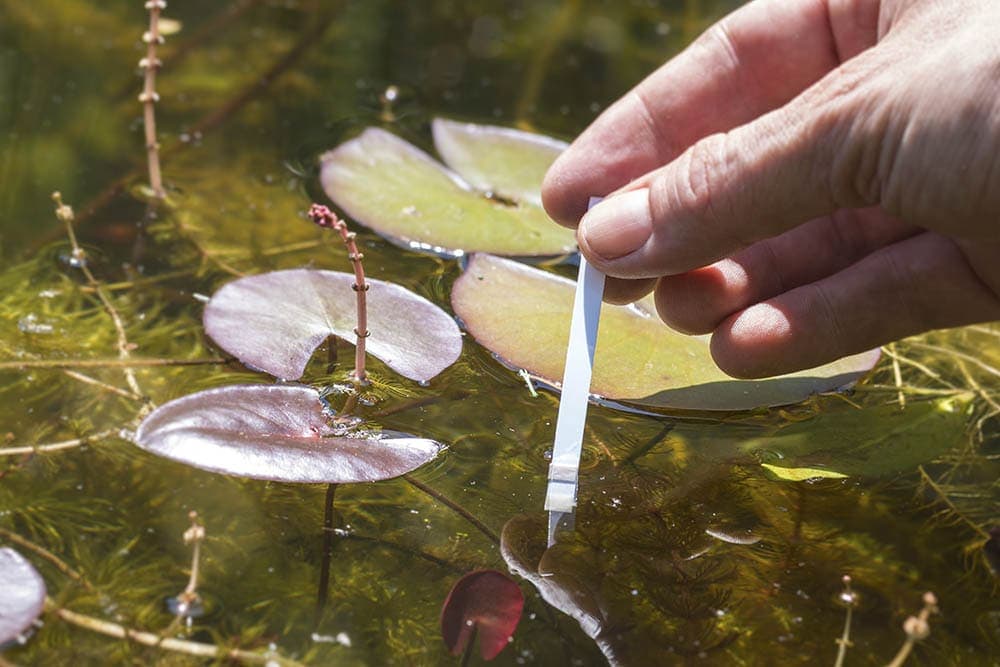
To raise the pH, you need to add something to the water that is alkaline. Keep in mind that you want pH levels to change slowly, not wildly swing the opposite direction, so don’t go overboard when adding things. You can always add more later.
Baking soda is a favorite product for raising pH that is easy to come by. Seachem Alkaline Regulator is a great product that comes with specific instructions on how to adjust your pH safely. There are multiple products on the market to adjust your pH levels, so choose what you feel will work best and be safest for your pond.
Wait at least 12 hours before retesting your pH levels, although 24-48 hours is best. Your pH levels shouldn’t be swinging rapidly, so if you add something to raise the pH, then immediately check your pH and see that it’s still low, then you may be getting a false reading because the products you added haven’t had time to begin working. If you recheck your pH too soon, you may end up inappropriately adding more product than necessary.
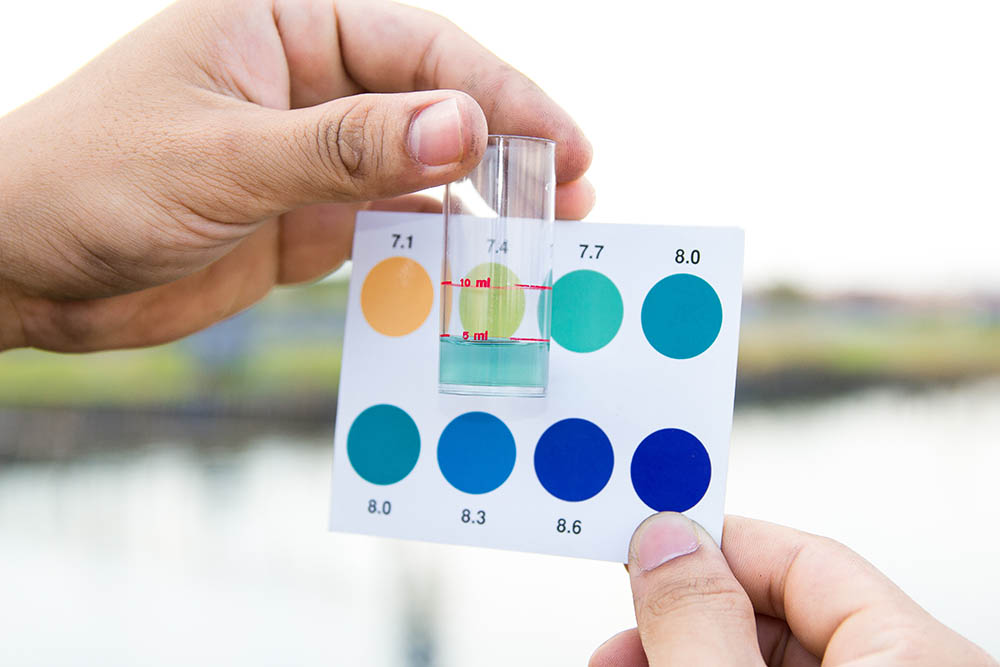
Once you’ve determined that your pH levels still need adjustments, then you can add more product to the water. Continue to follow the directions on the package, though. If you feel like you should have seen more of a shift in the pH, so you add a higher dose of product than recommended, then you may cause a rapid pH shift, leading to the death of your pond animals.
Make sure your pH levels are checked right before you begin attempting to make adjustments. This is especially important if your water is soft since soft water can experience more rapid changes in pH than hard water.
There are a few ways to lower the pH of your pond water. Some of the slowest but simplest ways are to add peat or leaf litter to the water. Indian Almond, Jackfruit, and Mulberry leaves are all great options to slowly lower the pH of your water. Driftwood is also a good choice. Keep in mind that these items will lower your pH slowly over time and will release tannins into the water, making the pond water dark tea colored.
Wait at least 12 hours, with 24-48 hours being preferred, before rechecking the pH levels. If you are using a method to slowly change your pH, like driftwood and leaf litter, then it’s best for you to regularly check your pH for at least 1-2 weeks after adding these products. This will allow you to see if you added enough to create a shift in the overall pH of the pond.
If you are using a chemical additive, then you can add more if needed. If you are using leaf litter and driftwood, then you can add more leaf litter and driftwood to the pond. This will lower and maintain the pH as the products break down.
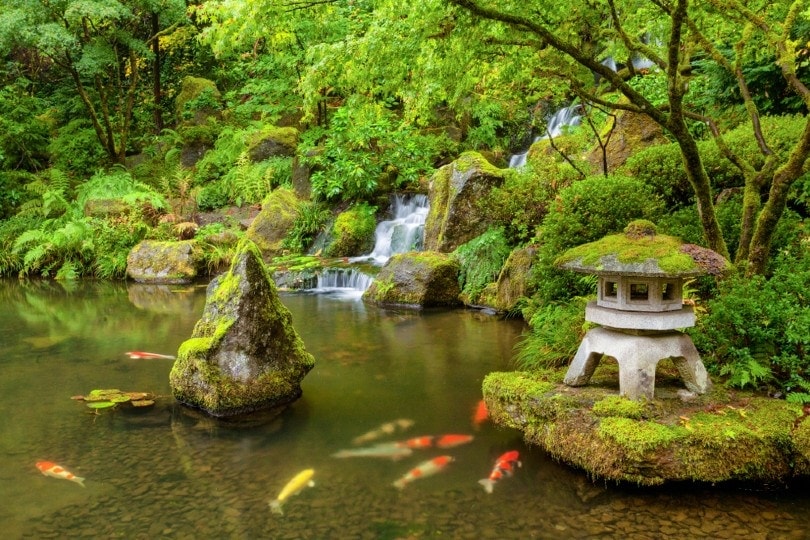
Understanding the ins and outs of pH can be confusing. It’s a complicated thing to understand, especially when you start getting into GH and KH. It is necessary to understand the basics, though. Keeping your pond’s pH stable is going to keep your fish healthier than rapidly altering the pH will.
Rapid pH swings can result in the death of animals and even some plants. For the safety of your aquatic friends, make sure you carefully follow the instructions on any products you add to your pond. This will help you prevent large pH swings while safely adjusting the overall pH to where you need it to be.
Role of Lactic Acid Bacteria – Lactic acid bacteria (LAB)
Below is a short article explaining the benefits of clay
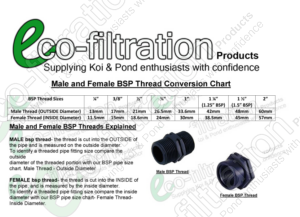
How to Measure Your BSP Fittings When it comes to